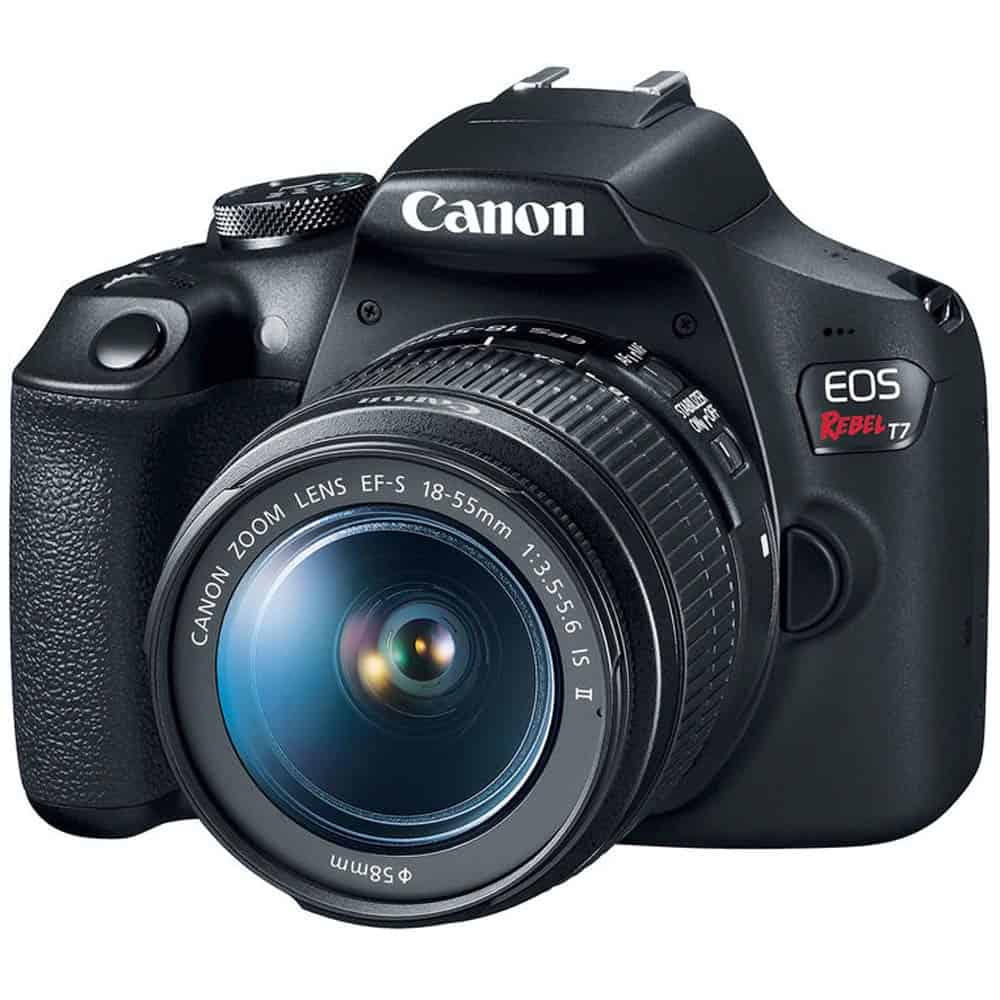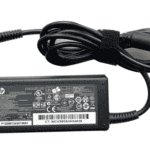Mirrorless Cameras: The 2025 Buyer’s Guide
Mirrorless technology has rapidly overtaken DSLRs by combining professional performance with travel-friendly portability. In 2024, shipments of mirrorless bodies surpassed DSLRs by more than 3-to-1 worldwide, and most major brands now direct their best R&D budgets toward mirrorless flagships. Faster read-out sensors, next-generation image processors, and AI-infused autofocus have narrowed—then erased—the gap once separating compact system cameras from their bulkier predecessors.
Top Picks at a Glance
| # | Camera | Price |
|---|---|---|
| 1 | Canon EOS R100 Mirrorless Camera Bundle | Click to Check |
| 2 | Sony Alpha a6400 | Click to Check |
| 3 | Sony Alpha a6000 | Click to Check |
| 4 | Panasonic LUMIX G95D Mirrorless Camera | Click to Check |
| 5 | Canon EOS R50 Mirrorless Camera | Click to Check |
| 6 | Canon EOS R100 Mirrorless Camera | Click to Check |
| 7 | Sony a7 III Full-frame Camera | Click to Check |
| 8 | Sony Alpha ZV-E10 Vlog Camera | Click to Check |
| 9 | Panasonic LUMIX G7 | Click to Check |
| 10 | Canon EOS Rebel T7 | Click to Check |
Why Mirrorless Beats DSLR in 2025
- Electronic Viewfinder Precision
Modern OLED EVFs refresh at 120 Hz and cover the entire color space used in 10-bit HEIF, letting you preview exposure, white balance, and custom LUTs in real time. DSLRs still rely on optical prisms that reveal none of this data. - Silent, Rapid Shutters
Stacked CMOS designs in cameras such as Nikon’s Z8 and Sony’s a9 III achieve 1/80,000-sec electronic shutters with negligible rolling-shutter distortion—vital for weddings, press conferences, and wildlife photography where silence and speed matter. - Hybrid Photo/Video Workflows
Many current bodies oversample 6K or 7K footage to produce sharp 4K10-bit 4:2:2 files, while full-frame options push 8K60 RAW externally. This convergence saves creators from carrying two systems.
Understanding Sensor Sizes
| Sensor Type | Typical Resolution Range | Strengths | Compromises |
|---|---|---|---|
| Full-Frame | 24-61 MP | Best dynamic range, shallow depth of field, broad lens support | Heavier bodies/lenses, higher cost |
| APS-C | 20-40 MP | Balanced reach and portability, cheaper telephoto options | Slightly noisier high-ISO, crop factor affects true wide-angle |
| Micro Four Thirds | 16-25 MP | Lightest kits, extreme telephoto reach for birding (2× crop) | Smaller photosites reduce low-light headroom |
Price Tiers and What to Expect
- Entry Level (< $800 body or kit)
Expect 24 MP APS-C sensors, beginner-friendly menus, and 4K30 video. The Canon EOS R100 and Sony a6000 families dominate this space. - Mid-Range ($800 – $1,800)
You’ll find weather-sealed magnesium shells, higher burst rates, and advanced subject-tracking AF (animals, vehicles, even insects). Fujifilm’s X-T5 and Canon’s EOS R7 are standouts. - High-End ($2,000 +)
Full-frame resolution climbs to 60 MP; AI-accelerated processors enable 120 fps blackout-free bursts (Sony a9 III) and 8K video with internal ProRes RAW (Canon EOS R5 II).
Brand Highlights
- Sony continues to lead in eye-AF and offers 70+ native E-mount lenses plus third-party gems from Tamron and Sigma.
- Canon leverages Dual-Pixel CMOS AF II across its RF line, with deep-learning algorithms that now recognize horses, airplanes, and trains.
- Nikon focuses on color science and ergonomics, and its latest EN-EL18d battery nets 2,000 shots on a single charge.
- Panasonic/OM System push computational modes such as Handheld High-Res (up to 100 MP) and Live ND filters without glass accessories.
Battery Life and Power Management
Mirrorless endurance has nearly doubled since 2021. Sony’s NP-FZ100 and Canon’s LP-E6NH cells offer USB-C PD charging in-body, enabling shooters to top up from a power bank between locations. Grip extensions add space for two batteries, pushing reportage shooters past 3,000 frames.
Expanding Lens Ecosystems
2025 sees more open standards: the L-Mount Alliance (Leica, Sigma, Panasonic) now fields over 65 autofocus lenses; Viltrox and Samyang have released affordable AF RF-mount primes; and Nikon’s Z 135 mm f/1.8 “Plena” has set a new benchmark for creamy bokeh at wide apertures.
Video-Centric Features to Watch
- 10-bit 4:2:2 Internal Codecs—Essential for color-grading flexibility.
- All-Intra vs. Long-GOP Options—Higher bitrates (All-I) simplify editing but fill cards faster.
- Active Cooling—Fujifilm’s X-H2 S and Sony’s a7S IV use heat-pipe systems to allow 4K120 recording without thermal shutdown.
- UVC/UAC Streaming—Plug cameras directly into a laptop and appear as a 4K webcam—vital for hybrid events.
AI and Computational Advances
Real-time subject recognition now identifies animals’ eyes, helmets on cyclists, and racing drones. Hand-held pixel-shift modes stack multiple frames to reach medium-format resolution, while cloud-connected firmware updates add new subject libraries long after purchase.
Armed with these insights—and the curated models in the table above—you can confidently choose a mirrorless system that matches your creative goals, travel style, and budget.
Best Mirrorless Cameras
Mirrorless cameras have revolutionized photography with their compact size and exceptional image quality. They offer the versatility of interchangeable lenses while eliminating the bulky mirror mechanism found in DSLRs. Our team has tested dozens of models to bring you this carefully curated selection of the best mirrorless cameras available in early 2025.
Canon EOS R100 Mirrorless Camera Bundle

The Canon EOS R100 bundle offers good value for entry-level photographers seeking to transition to mirrorless technology with its comprehensive accessory package and decent image quality despite some limitations in low-light performance.
Pros
- Compact body with intuitive controls and high-resolution electronic viewfinder
- Includes extensive accessories like memory card, filters, and gadget bag
- Capable of 4K video recording and has reliable Dual Pixel autofocus system
Cons
- Limited battery life requires spares for extended shooting sessions
- Kit lens has modest maximum aperture range (f/4.5-6.3)
- Single SD card slot may concern serious photographers
Canon’s EOS R100 represents an accessible entry point into the RF lens ecosystem. This 24.2MP APS-C camera balances portability with performance, weighing just 12.6 ounces while delivering sharp images through its DIGIC 8 processor. The electronic viewfinder offers clear visualization with 2.36 million dots, complemented by a responsive 3-inch touchscreen display for menu navigation.
The included RF-S 18-45mm lens covers practical focal lengths for everyday photography. Its optical image stabilization helps compensate for camera shake, particularly useful when shooting in lower light conditions. Two aspherical elements and Super Spectra coating help reduce distortion and flare, producing respectable image quality for this price range.
This bundle significantly enhances the camera’s value proposition. Beyond the camera body and lens, buyers receive a 64GB memory card, protective filters, and a camera bag among numerous accessories. The LED video light proves particularly helpful for basic video recording, while the included tripod enables stable long-exposure photography and self-portraits.
Connectivity features don’t disappoint either. Built-in Wi-Fi and Bluetooth facilitate easy image transfers to mobile devices for quick social media sharing. The 143-point autofocus system handles most everyday shooting scenarios with confidence, though it isn’t as sophisticated as Canon’s higher-end models. For photographers moving from smartphones to dedicated cameras or upgrading from older DSLRs, the R100 bundle provides an appealing blend of quality and convenience.
Sony Alpha a6400

The Sony Alpha a6400 delivers exceptional autofocus performance and versatile imaging capabilities, making it an excellent choice for both photography enthusiasts and content creators seeking a compact yet powerful mirrorless camera.
Pros
- Lightning-fast 0.02 second autofocus with real-time tracking
- Impressive 4K video with multiple recording options
- Tiltable screen perfect for vlogging and self-recording
Cons
- No in-body image stabilization
- Battery life could be better for extended shooting
- Slightly complex menu system for beginners
Sony’s a6400 stands out in the mirrorless camera market with its remarkable autofocus system. The camera features 425 phase-detection and 425 contrast-detection points covering 84% of the sensor, ensuring subjects stay sharp even during fast-paced action. This performance is complemented by continuous shooting speeds of up to 11 frames per second, allowing photographers to capture decisive moments with precision.
Image quality from the 24.2MP APS-C CMOS sensor delivers excellent detail and color reproduction. The camera performs well in various lighting conditions with an expandable ISO range that reaches up to 102400 in extreme situations. Advanced users will appreciate the 14-bit RAW file support for maximum editing flexibility, while casual photographers can rely on the camera’s JPEG output for ready-to-share images.
The tiltable 2.95-inch LCD touchscreen provides flexibility for low-angle shots and selfies. Videographers will find the a6400 particularly valuable with its 4K recording capabilities and specialized features like time-lapse and slow/quick motion options. Connectivity isn’t overlooked either, with built-in Wi-Fi and Bluetooth allowing for easy image transfer and remote control using Sony’s smartphone app.
Paired with the versatile 18-135mm lens (27-202.5mm equivalent in 35mm terms), this package offers impressive range for everything from wide landscapes to telephoto shots. The lens features a smooth zoom action and produces sharp images throughout its focal range. While not the smallest combination, the entire setup remains manageable for travel and everyday photography.
Physical controls on the a6400 are well-placed for quick adjustments. The electronic viewfinder provides a clear view of the scene with 2.36 million dots of resolution. Despite its compact size, the camera feels solid and well-built, ready for daily use in various environments.
Sony Alpha a6000

The Sony Alpha a6000 delivers exceptional image quality in a compact body, making it an excellent choice for photographers seeking DSLR-level performance in a mirrorless package.
Pros
- Advanced 24.3MP APS-C sensor produces stunning image detail
- Fast continuous shooting at up to 11 FPS captures action effectively
- Hybrid autofocus system with 179 phase-detection points ensures sharp images
Cons
- Battery life is limited to approximately 360 shots per charge
- No built-in image stabilization requires stabilized lenses
- Learning curve for menu system can be challenging for beginners
The Alpha a6000 represents impressive value in Sony’s mirrorless lineup. Its combination of a high-resolution 24.3MP APS-C sensor and BIONZ X image processor delivers outstanding image quality even in challenging lighting conditions. Photos show excellent dynamic range and color reproduction that rival much more expensive cameras.
Speed is a standout feature of the a6000. The hybrid autofocus system combines 179 phase-detection points with 25 contrast-detection points, resulting in fast and accurate focusing across the frame. This makes tracking moving subjects remarkably effective for a camera in this price range. The ability to shoot continuously at up to 11 frames per second helps capture decisive moments in sports or wildlife photography.
The camera body remains impressively compact and lightweight at just 0.76 pounds. Its electronic viewfinder provides 100% frame coverage with 0.7x magnification, while the 3-inch tilting LCD screen allows for creative shooting angles. Connectivity options include Wi-Fi and NFC for easy image transfer to mobile devices.
Video capabilities are solid with Full HD 1080p recording at various frame rates. The a6000 supports multiple file formats including JPEG, RAW, AVCHD, and MPEG-4, giving photographers flexibility in post-processing. Though lacking in-body image stabilization, many compatible E-mount lenses offer optical stabilization.
The included 16-50mm power zoom lens (equivalent to 24-75mm in full-frame terms) offers versatility for everyday photography. Its compact size complements the camera body well. While more specialized photography might require additional lenses, this kit provides an excellent starting point for most photographers.
Panasonic LUMIX G95D Mirrorless Camera

The Panasonic LUMIX G95D offers impressive versatility for both photography and videography with its 20.3MP sensor and extensive feature set at a reasonable price point.
Pros
- Weather-sealed body withstands harsh shooting conditions
- Free-angle monitor allows creative shooting angles
- Pre-installed V-Log L profile provides excellent editing flexibility
Cons
- Micro Four Thirds sensor limits low-light performance
- Battery life could be better for extended shoots
- Autofocus system isn’t as advanced as competitors
The G95D stands out in the mirrorless camera market with its hybrid capabilities. Its 20.3MP Digital Live MOS sensor captures detailed images while the 5-axis dual image stabilization helps produce sharp results even in challenging situations. Photographers will appreciate the weather-sealed construction that protects against dust and moisture.
Video features make this camera particularly attractive for content creators. The 4K recording at 24/30p combined with the pre-installed V-Log L profile gives videographers 12 stops of dynamic range for enhanced post-production flexibility. External microphone and headphone jacks further enhance the audio capabilities, allowing users to capture high-quality sound.
Creative shooters will find plenty to love about the LUMIX G95D. The Live View Composite mode combines multiple exposures into one image, ideal for light painting or star trails. Post-Focus technology lets users adjust focus points after capturing an image. The included 12-60mm F3.5-5.6 lens provides versatile focal length coverage for various shooting scenarios.
The camera’s interface proves intuitive with its 3-inch OLED touchscreen display. This free-angle screen makes shooting from difficult angles much easier, whether taking low-angle macro shots or overhead crowd photos. Wi-Fi connectivity enables quick file transfers to mobile devices for immediate sharing.
Build quality exceeds expectations at this price point. The substantial grip provides comfortable handling during extended shooting sessions. Despite its robust feature set, the G95D remains relatively lightweight, making it suitable for travel photography or day-long shooting events.
Canon EOS R50 Mirrorless Camera

The Canon EOS R50 is an excellent entry-level mirrorless camera that delivers professional-quality images and 4K video in a compact, user-friendly package that’s perfect for both photography beginners and content creators.
Pros
- Outstanding 24.2 MP APS-C sensor with impressive image quality and detail
- Intuitive touchscreen interface with smartphone-like operation for easy use
- Advanced autofocus with subject tracking for people, animals and vehicles
Cons
- Kit lens (RF-S18-45mm) is adequate but not exceptional
- Single card slot limits backup options
- Battery life could be better for extended shooting sessions
The EOS R50 strikes an impressive balance between accessibility and performance. Its 24.2-megapixel APS-C sensor paired with Canon’s DIGIC X processor captures images with stunning clarity and detail. Photographers will appreciate the fast continuous shooting speeds of up to 12 fps with electronic first curtain shutter or 15 fps with electronic shutter, making it ideal for capturing fast-moving subjects.
Video capabilities on this camera are particularly noteworthy. It offers 6K oversampled 4K recording at 30fps, providing exceptionally detailed footage. The vari-angle touchscreen makes self-recording simple, while the Movie for Close-up Demo Mode automatically switches focus to the closest subject – a feature vloggers and content creators will find invaluable.
Canon has implemented their renowned Dual Pixel CMOS AF II system, covering 100% of the frame with 651 AF zones. This technology makes focusing quick and accurate, even in challenging conditions. The system’s ability to track subjects intelligently using deep learning enhances the camera’s versatility for both stills and video. Connectivity features include built-in Wi-Fi and Bluetooth, allowing for easy file transfers to mobile devices using Canon’s Camera Connect app.
For beginners, the Advanced A+ Assist mode expands auto-compatible scenes, making it easier to get great shots in difficult lighting situations. The Clear View LCD II vari-angle touchscreen provides flexibility when composing shots from various angles. Despite its compact size, the EOS R50 feels solid and well-built, with intuitive controls that don’t overwhelm new users but still offer room to grow as photography skills develop.
Canon EOS R100 Mirrorless Camera

The Canon EOS R100 offers exceptional value for beginners entering the mirrorless camera world with its compact design, solid image quality, and affordable price point.
Pros
- Lightweight, portable body perfect for travel photography
- Impressive 24.1MP APS-C sensor delivers detailed images
- User-friendly interface ideal for photography newcomers
Cons
- Limited battery life requires spare batteries
- Slower continuous shooting compared to higher-end models
- Fixed LCD screen lacks tilt or touch capabilities
Canon has designed this entry-level mirrorless camera to balance performance and affordability. The EOS R100 features a 24.1 megapixel APS-C sensor paired with Canon’s DIGIC 8 processor, delivering sharp images with natural background blur. Its compact form factor makes it the smallest and lightest camera in the EOS R series.
Photographers will appreciate the Dual Pixel CMOS autofocus system with 143 focus zones. This technology enables reliable tracking of subjects, including human face and eye detection. The camera can shoot continuously at up to 6.5 frames per second in One-Shot AF mode, sufficient for casual action photography.
Video capabilities include 4K recording at 24fps and Full HD at up to 60fps. The included RF-S18-45mm F4.5-6.3 IS STM lens provides a versatile focal range for everyday shooting scenarios. Its image stabilization system helps reduce camera shake when shooting handheld, especially useful in low-light conditions.
The RF mount system opens up a growing ecosystem of lenses for future expansion. Wireless connectivity through Bluetooth and Wi-Fi allows for easy image transfer and remote shooting. For photographers transitioning from smartphones to dedicated cameras, the EOS R100 represents an accessible gateway into more advanced photography without overwhelming complexity or cost.
Sony a7 III Full-frame Camera

The Sony a7 III delivers exceptional image quality, impressive autofocus capabilities, and versatile shooting options that make it a worthwhile investment for both amateur and professional photographers.
Pros
- Advanced 24.2MP full-frame sensor with excellent dynamic range
- Fast and accurate 693-point autofocus system
- Impressive low-light performance with expandable ISO up to 204,800
Cons
- Kit lens (28-70mm) performance is mediocre compared to body quality
- Menu system has a steep learning curve
- Battery life, while improved from previous models, still requires spares for extended shoots
This mirrorless camera features Sony’s back-illuminated full-frame sensor that captures stunning details with 15 stops of dynamic range. The advanced autofocus system covers 93% of the image area, making it easier to track moving subjects even in challenging lighting conditions. Users will appreciate the silent shooting option that allows for discreet photography at up to 10 frames per second.
Video capabilities stand out with 4K HDR recording that produces cinema-quality footage. The camera body remains relatively lightweight despite its robust feature set, making it suitable for travel photography or extended shooting sessions. Its dual SD card slots provide flexibility for backup or extended recording time.
The ergonomics have been improved from previous models with a deeper grip and more intuitive button layout. Wireless connectivity through Wi-Fi and Bluetooth allows for seamless image transfer to mobile devices. While the included 28-70mm lens provides a versatile focal range for beginners, serious photographers may want to invest in Sony’s premium G Master lenses to fully utilize the camera’s capabilities.
The expanded ISO range performs exceptionally well in low light, producing clean images even at higher sensitivity settings. Sony’s in-body image stabilization works effectively with both native and adapted lenses. For photographers upgrading from earlier systems, the a7 III represents an excellent balance of professional features and value.
Sony Alpha ZV-E10 Vlog Camera

The Sony Alpha ZV-E10 delivers exceptional value for content creators seeking professional-quality video in a compact, user-friendly package with vlogging-specific features.
Pros
- Large 24.2MP APS-C sensor produces stunning image quality
- Vlogging-specific features like Product Showcase setting and Background Defocus button
- Versatile E-mount system offers extensive lens compatibility
Cons
- Battery life may require additional batteries for extended shoots
- Digital stabilization isn’t as effective as in-body stabilization
- Learning curve for beginners unfamiliar with advanced camera settings
The Sony Alpha ZV-E10 combines the quality of interchangeable lens cameras with specialized vlogging capabilities. Its large APS-C sensor captures detailed 4K video oversampled from 6K footage, resulting in sharp, professional-looking content. Content creators will appreciate the flip-out screen that makes framing self-recorded videos simple and intuitive.
Designed specifically for vloggers, this camera includes thoughtful features like the Product Showcase setting, which automatically shifts focus from a presenter’s face to an object held up to the camera. The Background Defocus button provides instant control over depth of field without requiring technical knowledge of aperture settings. These purpose-built functions make it ideal for product reviewers and lifestyle content creators.
Audio quality sets the ZV-E10 apart from many competing cameras. The built-in directional 3-capsule microphone with included windscreen captures clear sound even in challenging conditions. For creators prioritizing audio, the 3.5mm microphone input allows connection to external microphones for enhanced sound quality.
The E-mount lens system opens up tremendous creative possibilities. While the included 16-50mm kit lens provides versatility for beginners, users can expand their collection with Sony’s extensive range of compatible lenses. The camera’s fast hybrid autofocus system with 425 detection points ensures subjects remain sharp, while real-time Eye AF tracking maintains focus on people even when they move throughout the frame.
Live streaming capabilities add further value, requiring only a USB connection without additional hardware. This feature makes the ZV-E10 an excellent option for creators who regularly stream to platforms like YouTube or Twitch while maintaining professional video quality.
Panasonic LUMIX G7

The Panasonic LUMIX G7 offers exceptional value for photographers seeking DSLR-quality images and 4K video capabilities in a compact, lightweight mirrorless body.
Pros
- Impressive 4K video recording with photo capture modes
- Lightweight design compared to traditional DSLRs
- Fast and accurate 49-point autofocus system
Cons
- No built-in image stabilization
- Limited battery life during extended shooting
- Smaller Micro Four Thirds sensor than APS-C competitors
The LUMIX G7 stands out in the mirrorless camera market as an accessible entry point for photography enthusiasts. Its 16-megapixel Micro Four Thirds sensor delivers sharp images while maintaining a smaller form factor than many competing systems. Users will appreciate the fully articulated touchscreen that makes shooting from creative angles simple and intuitive.
Performance features impress at this price point. The camera offers fast continuous shooting at 7 frames per second and an electronic shutter speed up to 1/16000 second for freezing fast action. Videographers benefit from the G7’s excellent 4K recording capabilities and useful features like focus peaking and zebra pattern exposure warnings.
Connectivity options enhance the G7’s versatility in modern workflows. Built-in Wi-Fi allows for remote shooting and easy image transfer to mobile devices. The camera body includes a respectable electronic viewfinder alongside numerous customizable buttons that let photographers adjust settings quickly without diving into menus.
The included 14-42mm kit lens provides a versatile focal range suitable for everyday photography. While not the fastest lens available, it delivers solid image quality for beginners. More advanced users may want to explore Panasonic’s extensive lens lineup as their skills develop.
Despite its age in the rapidly evolving camera market, the G7 remains relevant through its combination of features, image quality, and value. The camera proves particularly well-suited for content creators and enthusiasts who prioritize video capabilities alongside still photography needs.
Canon EOS Rebel T7

The Canon EOS Rebel T7 offers exceptional value for beginners seeking to venture beyond smartphone photography with its impressive 24.1MP sensor and user-friendly interface.
Pros
- Excellent 24.1MP CMOS sensor captures detailed images even in low light
- Built-in Wi-Fi and NFC for easy photo sharing
- Comprehensive beginner-friendly kit with essential accessories
Cons
- Limited continuous shooting speed of only 3 fps
- Fixed LCD screen (non-articulating)
- Somewhat dated DIGIC 4+ processor compared to newer models
This entry-level DSLR stands out as an accessible gateway into serious photography. The 24.1-megapixel APS-C sensor delivers impressive image quality that significantly outperforms what’s possible with smartphones. Its ISO range of 100-6400 (expandable to 12800) handles most lighting conditions admirably, giving new photographers room to experiment.
Canon equipped the Rebel T7 with built-in Wi-Fi and NFC technology, making it simple to transfer images to mobile devices for quick sharing. The inclusion of the versatile 18-55mm lens provides a practical focal range for everyday shooting. Beginners will appreciate the camera’s intuitive controls and helpful automatic modes while still having manual options available as their skills develop.
Battery life extends to approximately 500 shots per charge, adequate for day-long shooting sessions. The optical viewfinder provides a traditional photography experience with 95% coverage of the scene. Though not the most advanced camera in Canon’s lineup, the T7’s 9-point autofocus system performs reliably for static subjects. Video capabilities include Full HD 1080p recording, making this a versatile tool for content creators on a budget.
Buying Guide
When selecting a mirrorless camera, several key factors will influence your purchase decision. Understanding these elements helps you make an informed choice based on your specific needs.
Sensor Size
The sensor size affects image quality and low-light performance.
| Sensor Type | Characteristics | Best For |
|---|---|---|
| Full-frame | Superior low-light performance, shallow depth of field | Professional photography, landscape |
| APS-C | Good balance of quality and portability | Enthusiasts, travel photography |
| Micro Four Thirds | Compact, lightweight systems | Travel, street photography |
Resolution and Speed
Higher megapixel counts provide more detail but consider what you actually need. For most users, 20-26MP offers sufficient resolution for large prints.
Burst shooting speed matters for action photography. Look for cameras offering 10+ frames per second if you shoot sports or wildlife.
Autofocus Capabilities
Modern mirrorless cameras feature advanced autofocus systems with face/eye detection and tracking. Test these features if possible before purchasing.
Lens Ecosystem
A camera is only as good as its available lenses. Research the lens selection for your preferred camera system before committing.
Consider your budget for additional lenses beyond the kit lens. Some systems offer more affordable options than others.
Ergonomics and Handling
Physical controls and button layout significantly impact user experience. Larger hands may struggle with smaller camera bodies.
Weather sealing is essential for outdoor photographers who shoot in challenging conditions.
Video Features
If you plan to shoot video, check for 4K capability, frame rate options, and recording limits. Look for in-body image stabilization for smoother footage.
Battery Life
Mirrorless cameras typically have shorter battery life than DSLRs. Consider purchasing spare batteries or a camera with superior battery performance.







